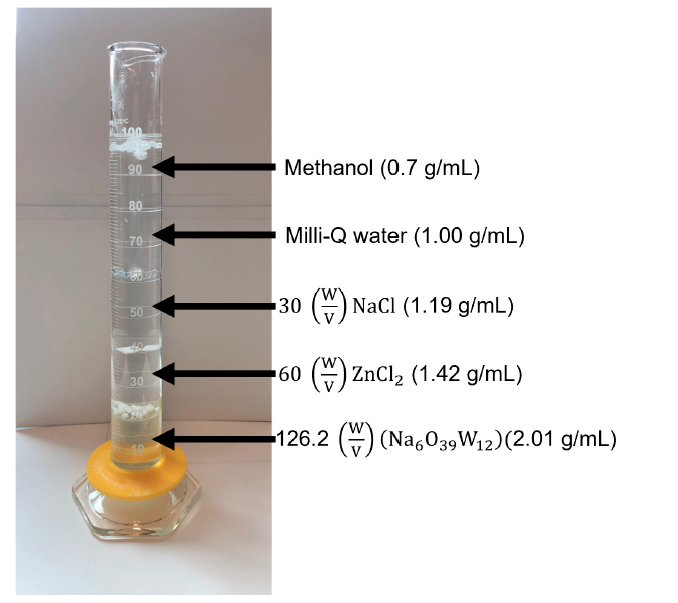
Figure 2. An example density separation tube with polystyrene, polyurethane, polyethylene terephthalate, and polypropylene.
Authors: Chanaka M. Navarathna, Hannah Pray, Prashan M. Rodrigo, Beatrice Arwenyo, Cassidy McNeely, Henry Reynolds, Natalie Hampton, Katherine Lape, Katie Roman, Maddie Heath, Sean Stokes, Sameera R. Gunatilake, Gombojav Ariunbold, Felio Perez, Rooban V. K. G. Thirumalai, EI Barbary Hassan, Islam Elsayed, Dinesh Mohan, Ashli Brown, Debra Moore, Stephen Reichley, Mark Lawrence, and Todd E. Mlsna
Abstract
Global plastic production and usage has increased annually for decades and microplastic pollutants (≤5 mm) are a growing concern. Microplastics in surface waters can adsorb and desorb harmful chemicals such as per- and polyfluoroalkyl substances (PFAS). Microplastics can accumulate across all tropic levels in the marine food web. The purpose of this research was to analyze the stomach and intestinal contents of stranded (Mississippi coast) bottlenose dolphins and sea turtles for the presence of microplastics and commonly found PFAS, PFOS, PFOA, and GenX. Gut contents were digested (10% KOH in 50% MeOH) and then analyzed for microplastics using pyrolysis gas chromatography-mass spectrometry (Pyro-GC-MS), Nile red microscopy, X-ray photo electron spectroscopy (XPS), and Raman spectroscopy. Digested sample filtrate was pre-concentrated using solid-phase extraction (SPE) before PFAS liquid chromatography-tandem mass spectrometry (LC-MS/MS) analysis. The PFOS extraction and analysis had 98.6% recovery when validated with certified pike‒perch fish reference material. The Nile red testing on most samples revealed the presence of microplastics (Table S1). The Pyro-GC-MS results from two samples confirmed the presence of the plasticizer acetamide. The Raman spectroscopy analysis indicated characteristic plastic peaks corresponding to polystyrene in one sample. PFOS (95.5 to 1,934.5 µg/kg) was detected in three dolphin stomach samples. This project is part of a long-term study with the goal of a better understanding of microplastics and PFAS environmental contamination and their impact on bottlenose dolphins and sea turtles.
Read the full publication at https://www.mdpi.com/2673-4532/4/1/3.
Published February 10, 2023